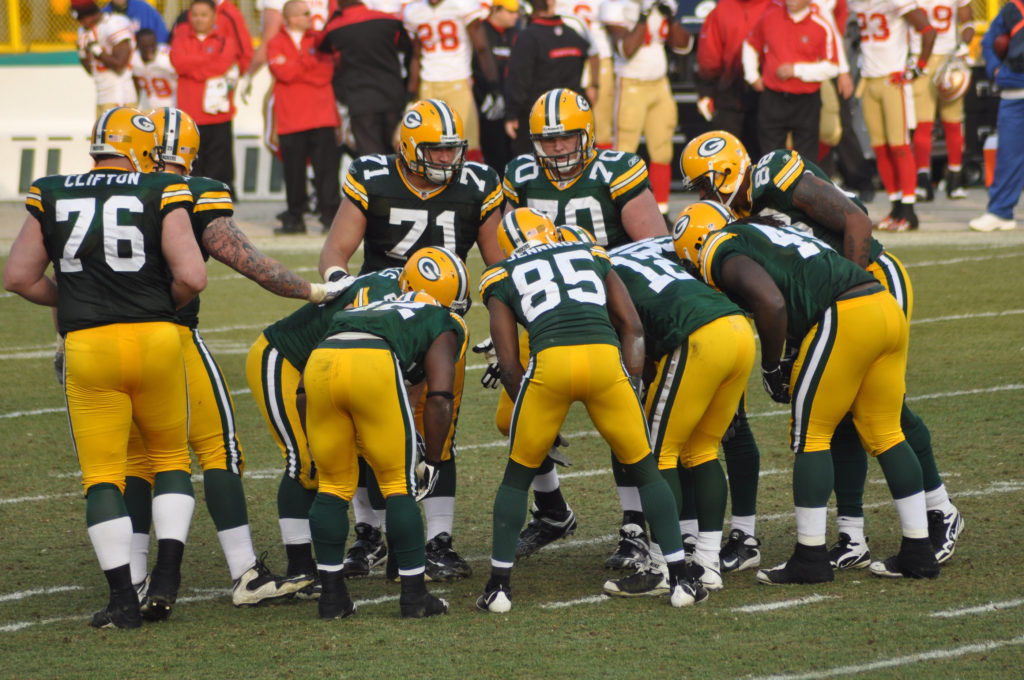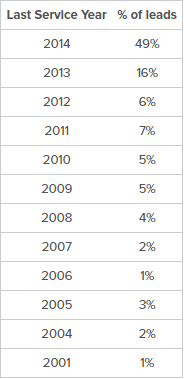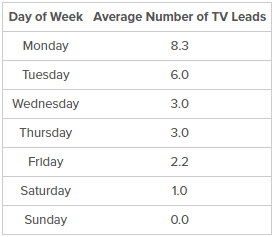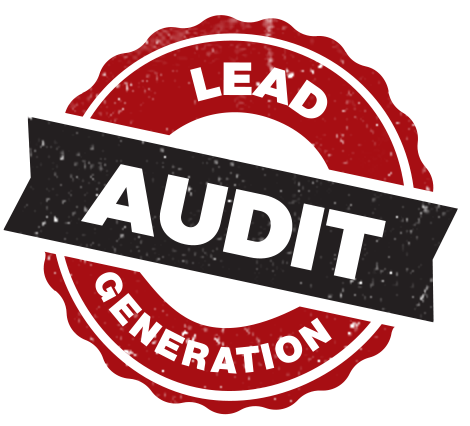
Happy New Year!
Let me take a second to say “so long” to 2016, possibly one of the craziest years in recorded history.
I hope your personal 2016 went well. Mine certainly did.
But if your 2016 didn’t go as planned–or you fell short of the goals you set—let me tell you an ironclad way to make 2017 the BYE (Best Year Ever).
It’s called Backward Goal Setting.
While typical goal setting calls for writing down a big audacious goal without figuring out your starting point, Backward Goal Setting focuses only on the individual steps it takes to get there.
I’ve used Backward Goal Setting since I was a 19-year-old missionary baptizing villagers in Taiwan… and it’s worked for me ever since.
Click here to read the story of how Backward Goal Setting made me—known in the village as the “giant white kid on an over-sized bicycle”—one of the most successful missionaries in Taiwan… and to see how it can make 2017 one of your Best Years Ever.
Save

Remember when Thanksgiving and Black Friday were their own separate things? You know, before Black Friday bled into Thanksgiving Thursday?
These two days used to synergize so well.
Here’s how things would go:
- 9am-4pm: Shove that 20lb turkey in the oven; get side dishes and dessert prepared.
- 5pm: Sit down to dinner with the family.
- 6:30pm: Trudge your bloated self to the living room to watch a little football. (That second piece of pumpkin pie? Not your best idea.)
- 7:30pm: Get annoyed when Uncle Bob starts talking politics after one too many beers.
- 8pm: Kick Uncle Bob out.
- 8:30: Clean up.
- 10pm: Go to bed to get plenty of rest for the 5am store opening times on Black Friday.
But over the past few years, this timeline has changed for some families.
Black Friday slowly started creeping backward, truncating Thanksgiving Day family festivities.
5am Friday openings became 2am Friday openings. Then 12am Friday openings. Then 10pm THURSDAY openings.
Today, many brick-and-mortar retailers open as early as 6pm on Thanksgiving Day. Some even earlier than that.
You can almost feel one of the only family-oriented holidays left being slowly killed by commercialism.
If you’re upset about that, I’ve got news for you: retailers don’t care. And when I look at it from a business perspective, I can’t say I blame them.
Don’t get me wrong…
I LOVE spending time with my family on Thanksgiving. I LOVE watching the Dallas Cowboys with my sons every year. And camping in front of Best Buy for hours, days, or weeks to get deal on a TV is not my thing. But I also understand that companies like Best Buy now need to take drastic action to stay afloat.
Consider this: Nine brick-and-mortar retailers have filed for bankruptcy in 2017.
These are big names, too, like Sears, Macy’s, and J.C. Penny. The places you’ve shopped at for decades.
Meanwhile, Amazon’s sales have shot from $16 billion to $80 billion since 2010.
To stay competitive, brick-and-mortar stores have had to get cutthroat. And that means carving time out of Turkey Day.
Though in-store sales are slumping, Thanksgiving is now a HUGE day for stores. In 2015, 35 million people went out and shopped on Thanksgiving, resulting in billions of dollars in sales.
In addition, data shows 70% of consumer spending happens at the first two stores people visit on Thanksgiving/Black Friday.
So you can see why Thanksgiving is too important for brick-and-mortar retailers NOT to be open on.
These companies don’t care if some people think they are ruining the one day a year meant for family bonding. Those aren’t the people these businesses are targeting.
The ones they ARE targeting are those who don’t mind hitting up some stores for some deals after chowing down on some pumpkin pie and watching a little pigskin.
This strategy of “exclusion” is smart marketing. And it’s a tactic contractors should copy.

Focus on YOUR market.
Don’t worry about the rest.
Don’t worry about alienating people who wouldn’t buy from you anyway. You’ll never get their business, so who cares?
Instead, focus your marketing on YOUR customer demographic. Be specific about who you are, what you do, who you work for, and who you DON’T.
You can do this in a number of ways. Here are a few examples:
- Be up-front about having higher prices (and therefore higher quality). You’ll filter out the price shoppers, while landing the high-end affluent clients you want.
- Admit you may not be the fastest (but only because you take the time to do everything perfectly). You won’t have to worry about taking calls from homeowners who want a project done yesterday.
- If you do have lower prices, shout it from the rooftops. Spirit Airlines markets itself as a low-cost airline to attract clientele that doesn’t care about pretentious extras and “flying fancy.” If you do this, though, make sure you detail WHY you have lower prices. Do you keep your overhead low? Do you buy directly from the manufacturer? If so, say so. You want people to know that your prices are lower because you’re smart… not because you sacrifice quality.
- Make it abundantly clear that ALL you do is kitchen remodeling… or windows… or commercial roofing… or contractor marketing (wink, wink). You won’t have to waste time talking to people who want what you don’t offer.
Something to chew on before today’s Big Dinner.
Happy Thanksgiving!

“I feel like we can run the table.”
That’s what Green Bay Packers’ Quarterback Aaron Rodgers said week 10 of the NFL season.
At the time, the Packers were a paltry 4-6 and in danger of missing the playoffs.
Everyone—analysts, fans, critics—was pronouncing them dead in the water.
After Rodgers’ declaration, though, something downright magical happened.
The Packers won their final six games of the regular season, finishing 10-6. They not only made the playoffs, but also won their division.
During the Packers’ regular-season win streak, Rodger’s stats were ridiculously great:
- 15 touchdown passes
- 71% pass completions
- A 121 Quarterback Rating
- And ZERO interceptions
That’s practically unheard of, even for an elite NFL quarterback.
Rodgers making good on his promise—and doing it in style—surprised everyone… except for Rodgers and the rest of the Packers.
That’s because Rodgers understands the power of positive thinking.
It might sound cheesy, but believing in yourself is one of the keys to unqualified success.
When you have TRUE faith in your abilities—and you tell yourself that you ARE great and that you CAN step up to any challenge, no matter how daunting—you’ll be flat-out amazed at what you can accomplish.
It’s like some hidden, dormant part of your brain awakens. Your self-assurance will shoot through the roof. You’ll feel unstoppable.
Plus, positive thinking is contagious. Put yourself in a positive mindset, and watch it spread to your employees.
Aaron Rodgers is the leader of the Green Bay Packers. He’s the guy the other 52 players on the team look to for inspiration and guidance.
So when Rodgers says he believes his Packers can run the table, his teammates gain a huge confidence boost. “If our leader believes in me, then I believe in me.”
And this positive thinking is still working for the Packers well into the playoffs—they sent my Dallas Cowboys (the #1 seed) packing in dramatic fashion.
When you inspire your own team with the power of positive thinking, they’ll start to put in more effort, work smarter, and become more loyal.
And when you AND your team tackle the job with a positive mindset, that’s when you can achieve Aaron Rodgers “run-the-table”-type success.
P.S. Next post, I’ll show you how to make this Home Show season MVP-worthy and achieve 2 to 10 times more leads. Stay tuned.
P.S.S Aaron Rodgers might be a witch.
Save

Let me tell you about the Curse Of The Volkswagen Beetle.
My oldest daughter is a really, really good kid. So when she turned 16 years old in 2012, I decided to buy her a car.
It was a 2006 pale blue Volkswagen Bug.
Here’s what it looked like:

My daughter LOVED it.
And I loved that it had just 36,000 miles and was only six years old (at the time).
To be extra safe, I bought an extended warranty for about $1,500.
Since the car was relatively new, had low mileage, and was protected by an extended warranty, I assumed my daughter would get years and years of use out of it.
My mistake? ASSUMING.
A month after I bought the car, the transmission started acting up.
Cost of repair: $1,300.
Amount covered by warranty: $125.
After I got that fixed, the catalytic converter needed replacing a few months later.
Cost of replacement: $770.
Amount covered by warranty: $65.
About a year later, I needed to replace the drive shaft:
Cost of replacement: $500
Amount covered by warranty: $0.
Finally, in December 2014, the engine completely gave out. It would have cost $7,500 to replace it—basically the total cost of the car in GOOD SHAPE.
That’s when I said, “Nope, I’m done.”
I sold the car in its broken down state at a loss of about $6,000.
Factoring in all of the repairs, the worthless “warranty,” and what I originally paid for the car, I lost over $8,300.
All because I assumed the car was in good condition.
It reminds me of when I spoke to the owner of a large HVAC company about his mailing campaign.
His company generates a big chunk of revenue through direct mail. The first time I talked to him (in 2014), he told me they would send six mailings a year to their customer base that hasn’t either purchased an HVAC system or the company’s service plan.
Here’s the gist of the conversation:
Me: How many customers are you mailing to every six months?
Client: Around 40,000.
Me: Whoa, that’s a lot. How far back do these customers go?
Client: Since we started the company in 2002.
Me: Do you get good response from the customers who are eight years or older?
Client: (pondering) I’m not really sure.
The client assumed since the mailings bring in big profits, everything was hunky-dory.
Not so fast.
After the call, the company dug into their numbers a little more. Here’s what they found:

83% of the leads from these mailers came from customers who had service within the past five years, and 65% within the last two years.
Sure, the company was making good money off these mailers. But think of how much money they wasted on old, unresponsive customers. They could have used that cash to mail to their newer customers more frequently and generate even bigger revenue than they already were.
Lesson: Just because something is working, don’t assume it can’t be improved.
Another example…
A client who was a kitchen and bathroom remodeler was advertising heavily on TV and the radio… but only on Mondays, Tuesdays, Saturdays, and Sundays.
Here’s how my convo with them went down:
Me: Why just those days?
Client: That’s when homeowners think about remodeling.
Me: How do you know that?
Client: A marketing guy told us a few years ago. That’s the way we’ve been buying it ever since.
Me: Do you know if that’s when the calls actually come in?
Client: I can check.
When the client pulled up the report, here’s what we found:

Uh-oh… those numbers don’t exactly match to the days they advertise.
Monday and Tuesday are good. But Saturday and Sunday are an advertising deathtrap.
Money, meet drain.
Radio and TV are “farming” (i.e. branding) marketing activities. You have to put yourself in front of people as much as you can—and at the times they’re most likely to see or hear you.
We changed the client’s radio and TV advertising schedule to reflect this. Instead of advertising only on days the client assumed brought in the most leads, we started advertising five days a week (Monday through Friday) to reach as many people as possible.
(Check out these blog posts on radio and television advertising to create ads that move the needle.)
Lesson: Assuming you’re reaching as many prospects as possible without actually looking at the numbers is like throwing your money in a pile, dousing it in gasoline, and tossing a match on it.
Bottom Line…
If you’re wondering how to generate more leads with your marketing, take a look at your numbers.
You may find your ASSUMPTION that something is working is just that…
An assumption.
Save















